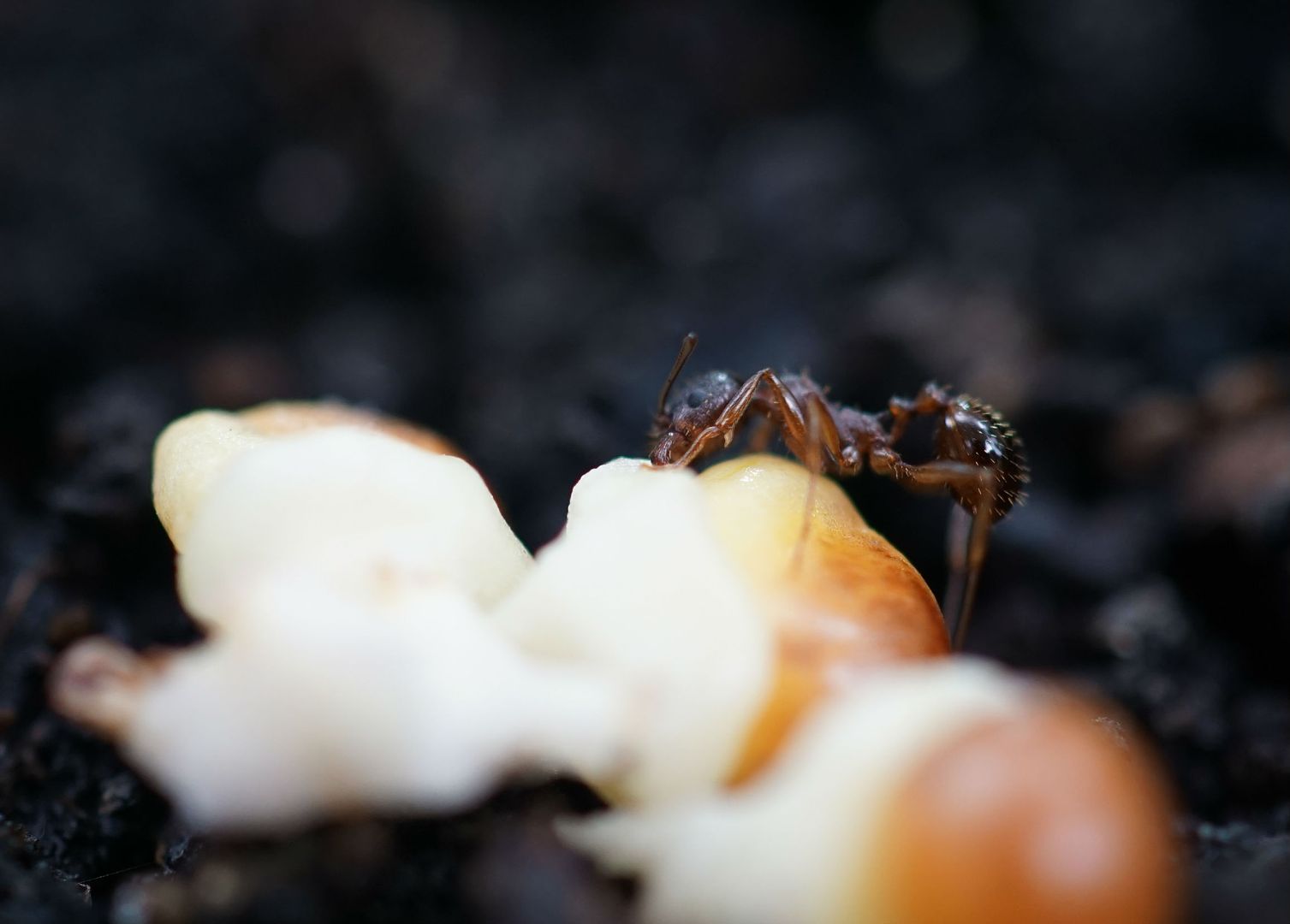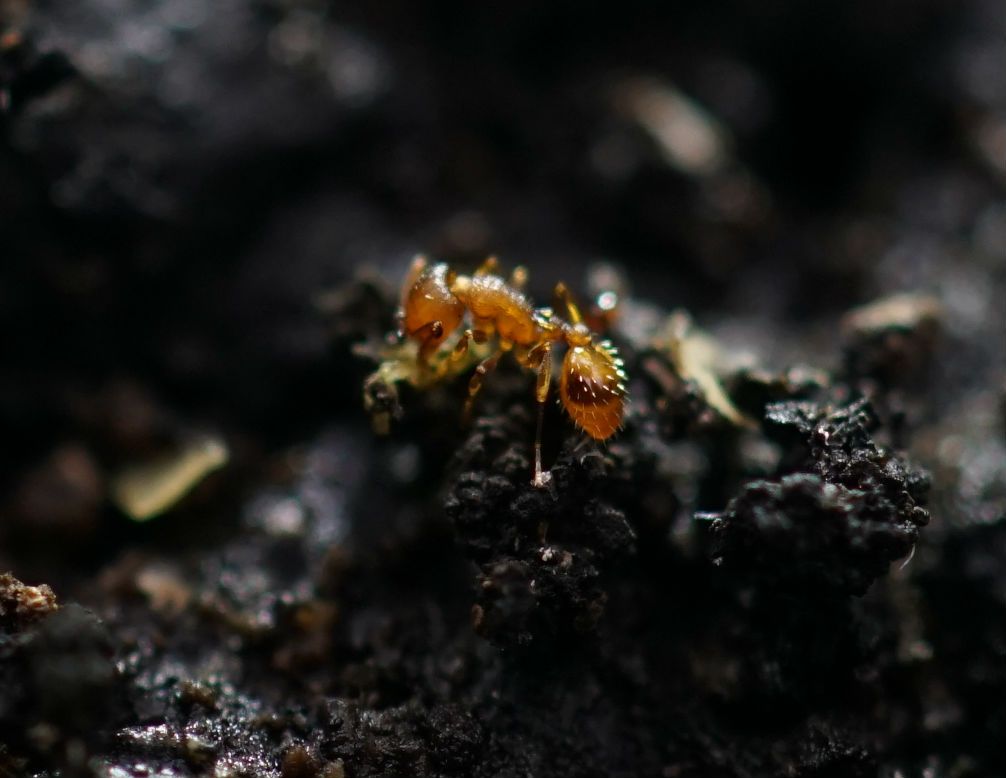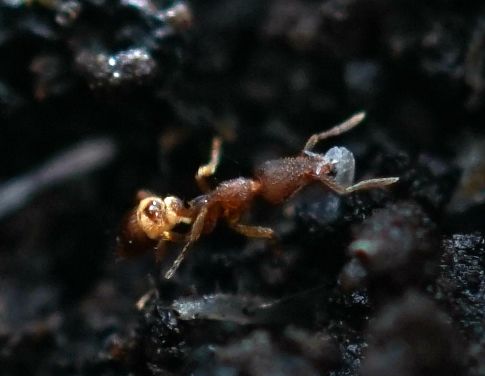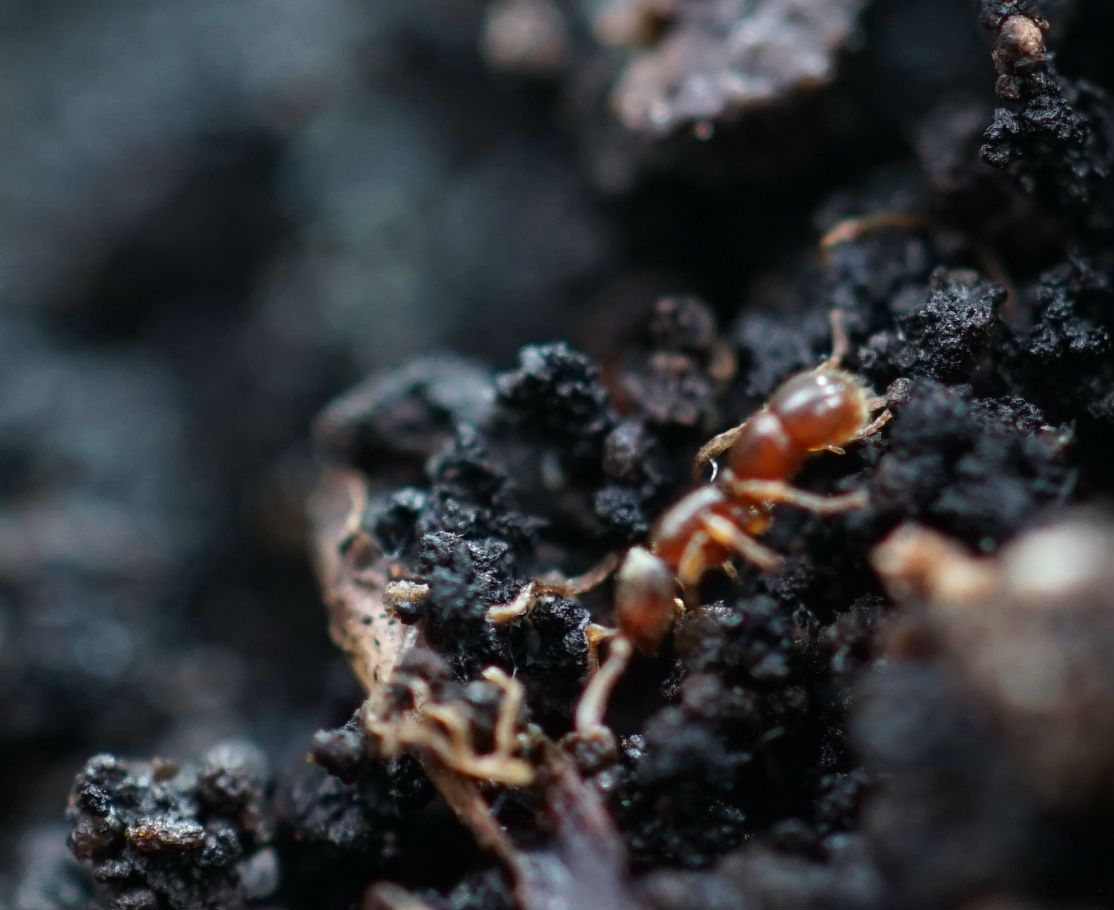While trying to photograph Aphaenogaster dispersing Trillium seeds I chanced upon a few unexpected surprises. The only colony I was able to find actively foraging happened to be in an old stump, a former Norway Maple we had had cut down many years ago. To set the scene properly this was in the shade of an Eastern Redbud Tree and the stump is now used as a perch for a Mason Bee box as well as a stone dish we use as a bird's bath. Naturally we flush out the water every day or so to keep the mosquito larva down and the stump has been getting soaked for many years. The result seems to be idea for a surprising amount of ant diversity.
The stump is absolutely teaming with decomposing arthropods. Here an Acorn Ant, Temnothorax curvispinosus, has found one. Small soft bodied creatures such as this, especially ones smaller than the ants themselves make excellent ant food. It's likely several colonies of Acorn Ants are also nesting within the log.
Here a Strumigenys pergandei has also caught something, I believe it's a spring tail. These ants are rarely seen because the only nest in shaded places that are "cold and damp." Cold refers to when they nest in soil, usually under a rotting log. Generally the soil will be cool to the touch, even in summer. They hunt and forage in rotting wood and leaf litter, often where decomposing insects and arthropods are abundant enough to have turned much of the dead plant matter into soil. Supposedly the yellowish structure on their waist segments, as well as the petal-like structures on their head and body are to help camouflage them from prey items.
This is an awful shot of a Proceratium silaceum but they were there too. Even more cryptic than Pyramica, they have a front facing stinger on the end of their gaster (abdomen) so they can sting prey that's in front of them, in tight closed spaces, as opposed to having to turn around. They're worth a google image search to get the idea.
It's nice knowing these uncommon ants can still be found in my yard, because this is the first time in several years that I've seen either in my yard. Now I know where to look!



